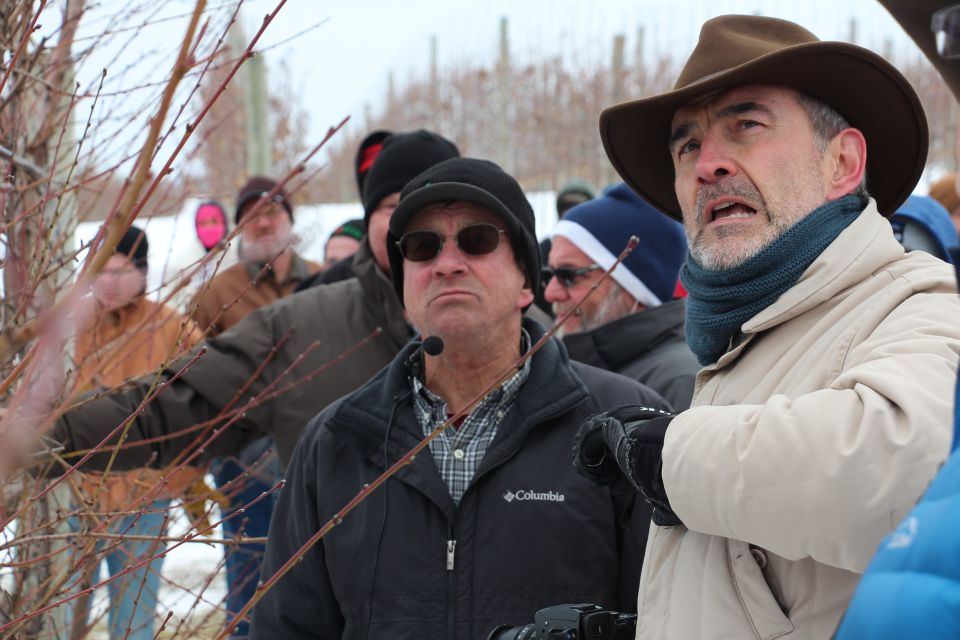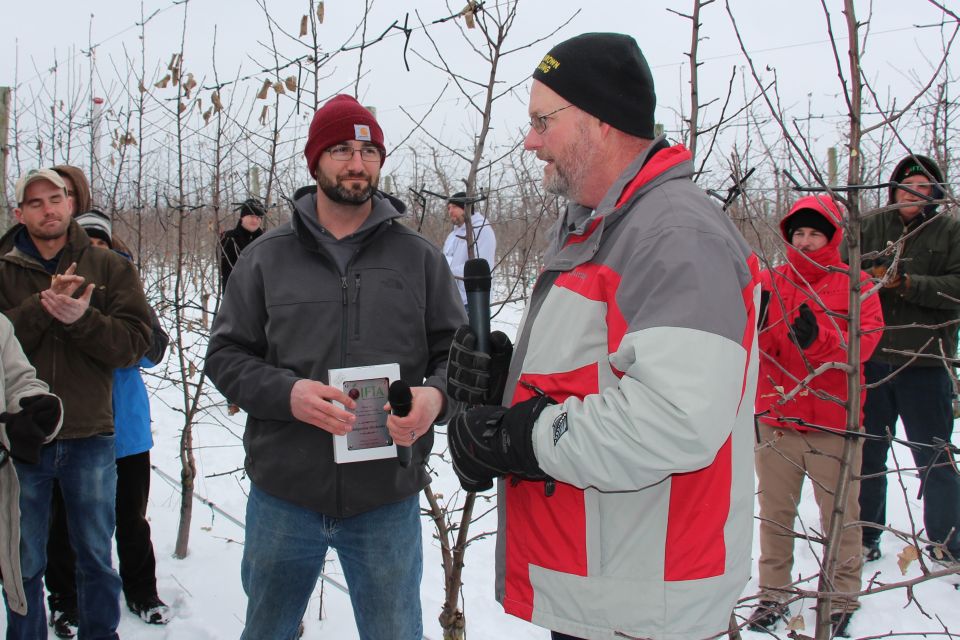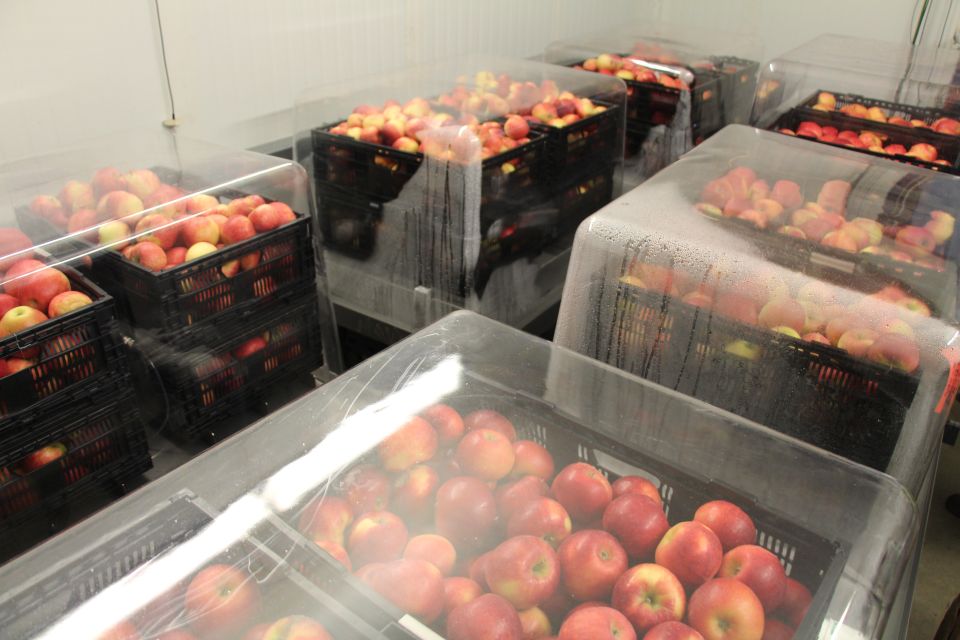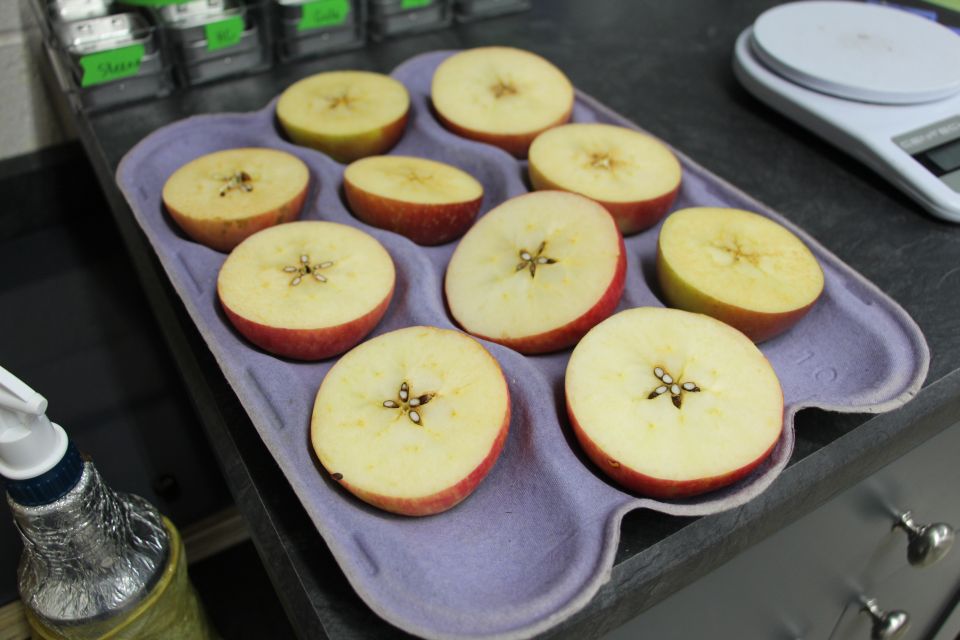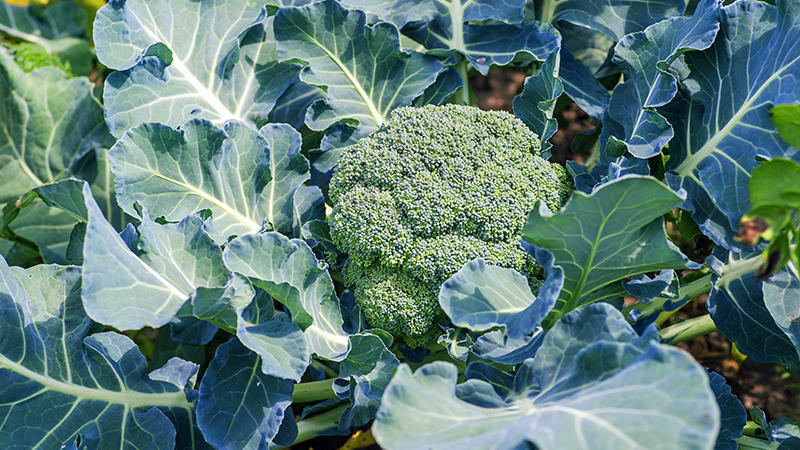Why Apple Growers Are Being Urged to Stay a Cut Above
When it comes to pruning, Bridget Engelsma, unlike some fruit tree growers, doesn’t hold back.
“I actually kind of enjoy it,” she said while presenting at the recently held week-long annual meeting of the International Fruit Tree Association (IFTA). “There’s something satisfying about seeing the work done in front of you.”
That fascination has always been present for Engelsma, 31. The third-generation farmer from Walker, MI, explained, with equal degrees of pride and embarrassment, one of her debut trims on the family’s apple farm, J Engelsma Orchards, operated by her father, Jim. She was eager from the get-go. Maybe a bit too eager.
“I guess sometimes I tend to be a bit extreme,” she said.
Hours after finishing the job, she overheard a conversation between her parents. “(My dad) was in the next room and apparently didn’t realize I was in the other room. I heard him say to my mom, ‘Yeah, it looks pretty rough.’ She says, ‘Was it that bad, Jim?’ And he says, ‘Well, I guess the trees will look halfway decent in a year or two.’
“So yeah, I don’t have any problem trimming heavy. I don’t mind cutting up wood.”
DIFFERING OPINIONS
Heavy pruning was the No. 1 hot-button issue inside — and certainly outside — the 63rd Annual IFTA Conference in Grand Rapids, MI. The topic spread from the comfy confines of the Amway Grand Plaza Hotel to the fruit-growing mecca known as “The Ridge” during three days of orchard tours across frigid Western Michigan.
To some attendees, including academia and growers, “extreme” pruning, as Engelsma might put it, is the remedy these days. To other attendees, also including academia and growers, a more conservative approach is still the call. To a few others in the IFTA crowd … well, they aren’t so sure what to think after five days of debate.
“I enjoyed going out to the orchards,” IFTA young professional Aylin Moreno, 22, told attendees. “Something that I did notice was that everyone had a different take on pruning.”
Including Moreno. The horticulturist with McDougall & Sons in Wenatchee, WA, sometimes found herself in disagreement.
“I would challenge saying it’s a good idea to let bloom happen in ‘Honeycrisp’ and then go back and prune it. That’s a big no-no for me. I don’t think I would be allowed to do that,” she said. “(But) even though I wasn’t agreeing with everything that I was seeing, I knew I was learning in my job.”
BUD COUNTS COUNT
Engelsma, of course, is perfectly fine with the more aggressive approach that can accompany precision cropping, the theme of this year’s IFTA conference. She cited her farm’s 2019 trial, which involved six-year-old, high-density ‘Gale Gala’ trees. The goal was to increase yield and size.
“This particular block, which amounted to about 90 apples per tree, I wanted to see about 50 bins to the acre,” she said.
Engelsma trimmed the entire block to 145 buds per tree (1.5x). Or so she thought. Ironically, she hadn’t pruned enough — on two successive cuts, no less. Ensuing bud counts by her dad would determine that she was still “significantly above” the 1.5x that would result in 145 buds.
“You can absolutely imagine my surprise when, the next day, my dad said, ‘Hey, Bridget, you have to take your boys, walk through there, and take some more wood out,’” Engelsma said. “My jaw hit the floor. Like, ‘Me, take more wood out? You have to be kidding me.’”
Engelsma’s crew responded by removing two of the larger limbs on each tree. When her dad’s second bud count determined that the task was still deficient, a third big limb was cut. Four randomized groups — 1x, 1.5x, 1.5x king, and grower standard (1.6x) — were then assigned, and trunks were measured to determine the ideal number of fruit per tree.
“I was so excited” about the 1.5x king bloom group, Engelsma said. “I thought this was going to be the winning group. Literally every single day I went out there and checked fruit size. I was just convinced this was going to be it. But (Michigan State University Extension Agent) Phil Schwallier did warn me. He said, ‘You may not see that big of a difference. Your expectations may not be reality there.’ And I did find that out.”
The 1.5x group wound up being most productive and profitable. The 1.6x grower standard group, while not significantly different, produced more apples but of smaller average fruit size. The 1x and 1.5x king groups didn’t fare as well, Schwallier said, because “this was one of those years where things set less than expected and thinned easily. Because of that, I wish we would have done a 2.0x group just to prove 1.5x was the best. We didn’t do that, but 1.5x is right there in the ballpark for most profitable production based on good fruit size and good number of apples.”
In summary, Engelsma said, “I honestly can’t emphasize enough the importance of dormant pruning to your bud load count. Bud counting is a must. My dad told me, ‘If I wouldn’t have counted your buds, I would have said, “Good job in trimming block No. 2. It looks good.’ However, a lot of times we’re not seeing as many buds as are actually out there.
“Counting is tedious, but it is necessary.”
THE CASE FOR ASE
Suzanne Bishop, Director of Research and Development with Allan Brothers in Naches, WA, joined Engelsma on the dais. She recommended artificial spur extinction (ASE), the crop load management method that uses bud-thinning techniques to precisely define where and how much fruit is set on the tree. The measure of a branch cross-sectional area (BCA) correlates to the ideal number of fruit that a branch and, in turn, a tree should support.
Trunk cross sectional area can be measured as well, according to Bishop, although it doesn’t correlate well after year five of a tree.
“It’s not about following a recipe or set of steps,” Bishop said. “It is learning how to read a tree.”
Bishop uses a Mafcot wheel at the base of the branch — no more than approximately 1 centimeter from the trunk — to determine the BCA. A 2.5 square centimeter (cm2) BCA branch would call for 15 buds, and if it had only 10, then “you don’t need to prune,” Bishop said. “That’s the major takeaway here. Every time you prune, you’re telling that tree to grow more, and if it already has enough crop load, it’s only going to induce to be even bigger. We don’t want to give that signal at all. So, we’re going to leave that branch as is.”
On the other hand, if another branch with a BCA of 1.1 cm2 presents nine fruit buds when the maximum should be only seven, “what we’d probably do is take out a small, little branch,” Bishop said.
The sum of each of the tree’s branches then results in a total BCA. A figure such as 26.4, multiplied by a crop coefficient of six fruit per BCA (that number can differ based on tree age, variety, and growing region), results in 156 apples on that tree. While that particular number is “pretty low,” Bishop said, “that’s OK” because the total number of 130 buds, multiplied by clusters of five, results in 650 potential pieces of fruit.
“I still might need to remove 494 fruitlets, so I have plenty of extra fruit to play with,” Bishop said. “That’s the benefit: You’re getting rid of even more of the excess if you’re going down to a one-fruit-per-bud basis.”
Bishop said she and her colleagues at Allan Brothers needed three years to “get a handle” on ASE and see a significant difference from conventional blocks. “Practice is the best way to learn it,” she said. “You have to get out there with the trees and measure.”
AUTOMATED BUD COUNTING
Terence Robinson, the veteran Tree Fruit Physiologist at Cornell University, is approaching his 65th birthday. He figures to have six more years before retirement. A longtime advocate of precision crop load management, his dream before leaving the industry is to automate bud counting.
“This is a project I’m really excited about,” he said. “We call this the Cornell Approach. We’ve been pushing precision crop load management for a number of years. But I felt like, after I went away for three years (2016-18 sabbatical), that everybody backslid. A few guys that were doing the (bud) counting kind of quit. Nobody likes it. Manual counting, nobody likes.”
Enter Moog Inc. The Buffalo-based company designs and manufactures motion and fluid controls and control systems for applications in aerospace, defense, industrial, and medical devices. And, hopefully, agriculture in the near future, Robinson told IFTA members.
“This is a once-in-a-lifetime opportunity,” he said, citing the need for funding before the project can get off the ground.
If successful, an autonomous vehicle with computer vision would geo-reference each tree in an orchard while counting: dormant flower buds; floral buds at green tip to pink; flowers at bloom; fruitlets at 10 to 20 mm; fruits at 25 to 35 mm; and fruits pre-harvest.
Until that time arrives, Robinson said the strategy in New York for 2020 is to vigorously prune all ‘Honeycrisp.’
“We expect a massive snowball bloom. Do the best you can. But when you get to green tip, go back and recount,” he said. “This year — and maybe next year and the year after that — you’ll have to recount by hand, but by the time I retire, we’ll have some automated vehicle for you and, therefore, improve the accuracy of the human work.”
Like this article? Go ahead and click the “Applause” button below. And feel free to leave a reader comment.











